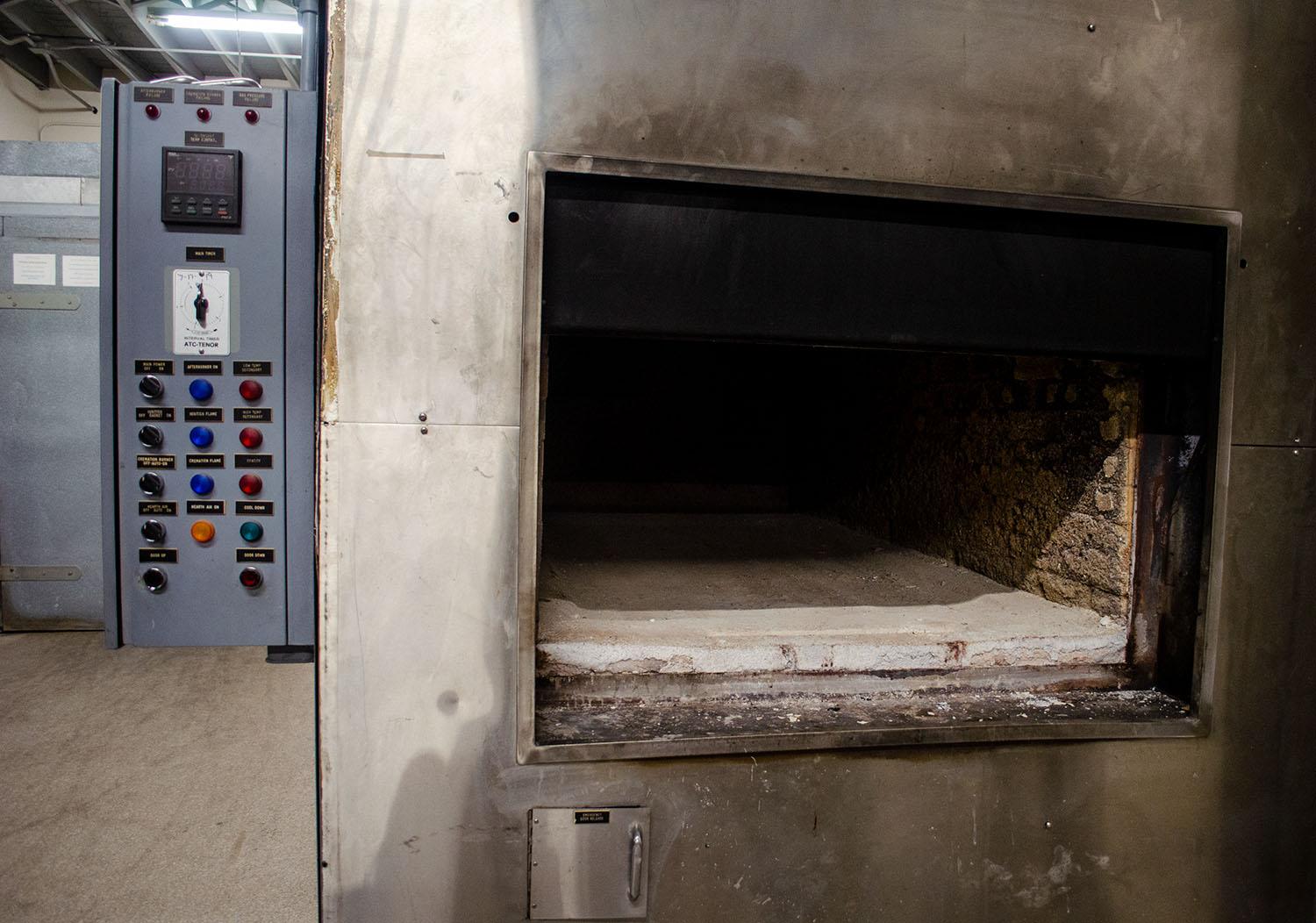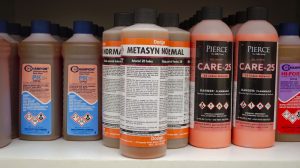Kevin Kirby, a Bowling Green funeral director, leads his life knowing the moment we breathe, we start taking our last breath. He reckons we’re all just a blip in the grand scheme of things. But Kirby has been tending to death all his life and knows firsthand the toll it takes. It’s hard, “helpin’ people get through things,” he said.
The last thing you can do for a person is prepare their body for burial. A body has carried a soul throughout its life, and some have ended up on a table ready to be embalmed, dressed and dolled up for an open-casket funeral. Others first have to be pieced back together after a tragic accident — homicide, suicide, car accidents.
Embalming is tedious. All the blood in the body is replaced with chemicals, and the skin is painted with Kalon restoration makeup to mimic the look and feel of a live human body, just for a little while. Meeting the expectations of the deceased’s loved ones is top priority because seeing them one last time has a lasting impact.
“Death is not a terrible thing,” Kirby said. “But it is when it happens to you.”
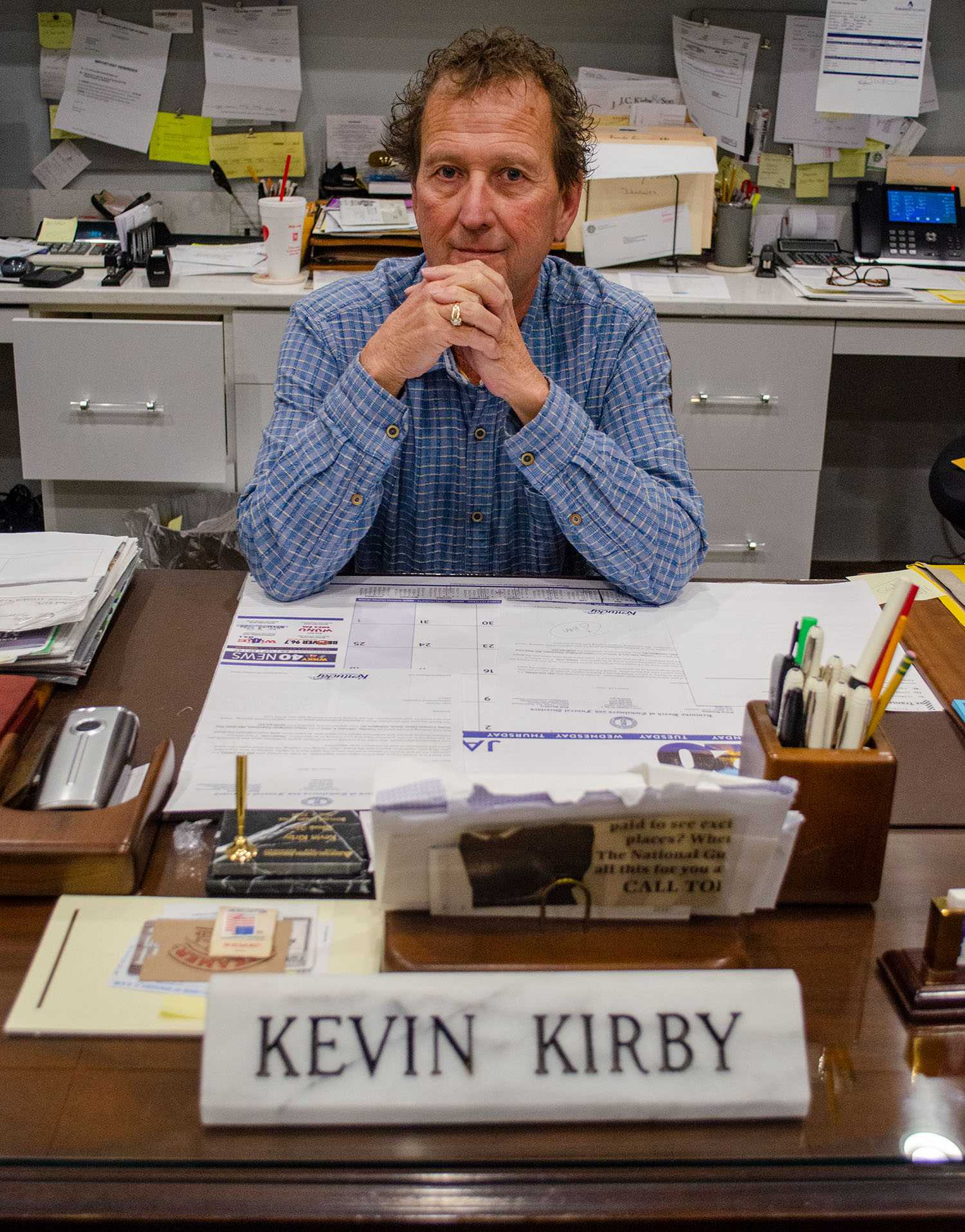
Kirby, 63, was born and raised among the two J.C. Kirby & Son funeral homes in Bowling Green. A seasoned embalmer and funeral director, Kirby now owns the family business, having lived in the house behind its Broadway Avenue location for the last 56 years. His wife has lived there with him for 42, and they have three children and nine grandchildren.
The Kirbys are in the business of making death a peaceful process for those stuck with the burden of arranging the sendoffs. Kirby is a big believer in open discussion of death and prearrangement because the unknown is scary, and life doesn’t stop to make things easier.
“If you don’t tell your kids what you want, how the hell they gonna know?” he said. “They definitely don’t know.”
Each funeral arrangement is personal, but embalming is pretty straightforward — as long as the body isn’t stubborn. Once a body is retrieved from a home, hospital or hospice, it is bathed, and embalming begins. The process moves quickly, so embalmers are always on-call.
The first step is called “setting features,” or closing the eyes and mouth. When a human is deceased, their muscles relax and their features fall wide open. The eyes are held shut by eye caps, similar to eye contacts but with small spikes on them. Embalmers, like Kirby, have two main ways of closing the mouth.
Most commonly, embalmers will use a needle injector to insert a screw into the upper and lower gums of the mouth with a wire attached to each screw. They close the mouth and twist the wires to keep it closed. Lastly, they fill the mouth with cotton or embalmer putty.
If the deceased is older or if their gums are deteriorating and unable to hold the screws, the embalmer will suture the mouth shut. Starting through the upper gum, the embalmer will take a needle with suture string up one nostril, far back so no one can see, back down through the opposite nostril and upper gum and around a large section of the bottom gum. They tie the jaw closed. Many times, the deceased had dentures and the mouth needs the filling to look more natural.
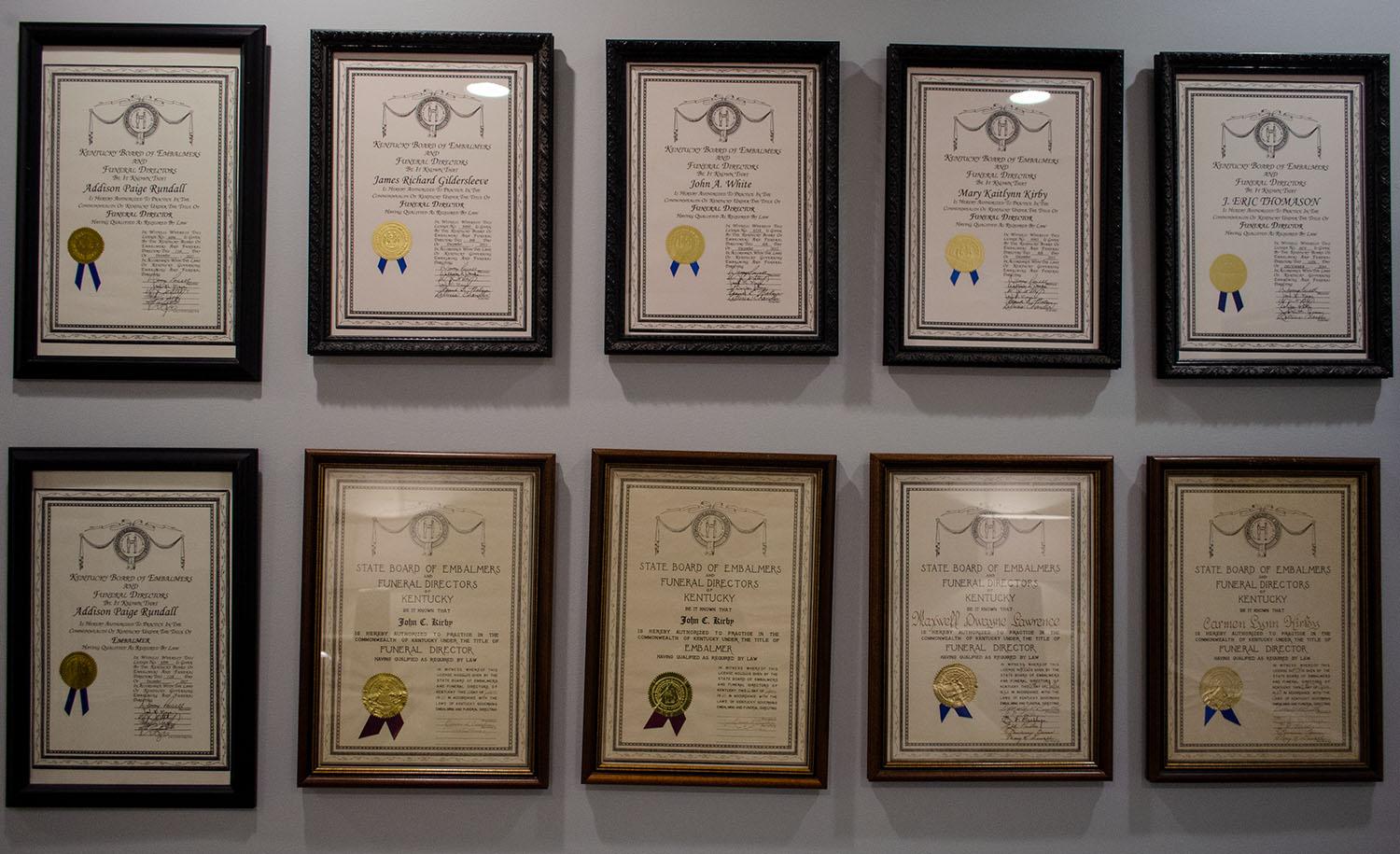
For Addison Lincoln, setting features is the most important part of the embalming process. Being particular is part of the job, and if the face doesn’t resemble its past self, you’ve done the family wrong.
“It’s kind of a relaxing thing to make somebody look like who they were when they were alive,” she said.
Lincoln, 25, has been an embalmer since 2015 when she started as a student worker at mortuary school. She graduated in 2016, started her apprenticeship and became an embalmer shortly thereafter. Native to Elton, Lincoln worked as an embalmer for a year at J.C. Kirby & Son, where she is now a funeral director.
Being particular is a trait that leads many embalmers to embalm their loved ones when they die. Lincoln said it allows the embalmer to set features that reflect the face they’ve always known.
After setting features, “raising the artery” comes next, with the carotid being the typical artery of choice. When Lincoln first learned how to embalm, raising the femoral artery was most common. Now it’s more common to choose an artery close to the heart.
The embalmer makes a cut along the body’s collarbone and uses an aneurysm hook to reach underneath the muscle, hook the artery and raise it up out of the body. Then snipping the artery, the embalmer will insert an arterial tube to inject the embalming fluid into the body. While this is happening, the veins are being drained of blood.
Oftentimes, the embalming fluid won’t reach all parts of the body, causing the embalmer to have to raise multiple arteries in the leg or wrist or wherever is needed. The feel of the body is one way to tell, but another is if the body has a PICC line, or peripherally inserted central catheter, a tube inserted for long-term IV use. PICC lines will drain when that part of the body is receiving embalming fluid.
Embalmed bodies feel firm. When a living human pinches the skin on their own arm, it moves around the muscles. When a living human pinches the skin on an embalmed body the skin wrinkles and resists to budge. The higher the chemical index of the embalmed fluid, the least life-like the body feels. Each body is different, and some can get away with a lower chemical index, Lincoln said.
At J.C. Kirby & Son, the embalmers put pink dyes in the embalming fluid to make the skin appear more natural, “to give them their color back,” Lincoln said.
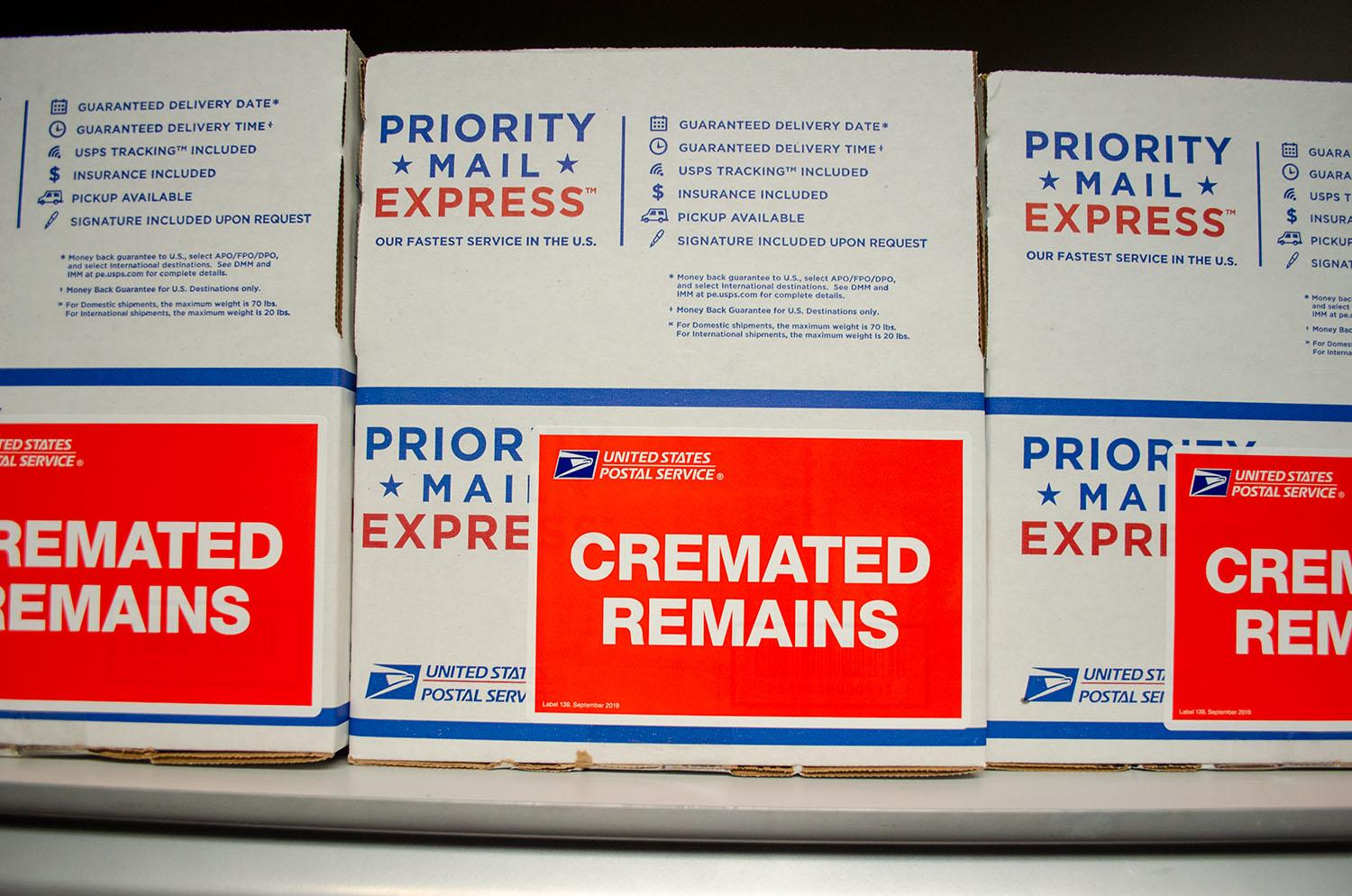
The body can’t be preserved forever and will eventually experience the natural consequences of death, a sensitive subject. Body decomposition differs with the season and is faster with higher humidity levels. While it’s all just her job in the community, Lincoln prefers the simplicity of embalming a body to the tough task of dealing directly with grieving families.
“Having moms come in and pick up their son’s cremated remains — even to this day — it makes me tear up,” she said.
It gets easier, though.
The body’s cavity, a fluid-filled space inside the body that holds and protects internal organs, decomposes first. Because embalmers are not medical professionals, they do not remove the organs, contrary to popular belief. Organs are only removed in the event of an autopsy or organ donation, neither of which are done by embalmers.
The cavity receives some embalming fluid from the initial injection into the artery, but it needs more. Aspiration begins by inserting a hollow needle, called a trocar, two inches to the right and two inches above the belly button. The trocar sucks out all of the fluid that has accumulated in the cavity since the embalming process has begun.
A stronger embalming fluid called cavity fluid is then injected back into the cavity so whatever organs are left are preserved for some time.
According to civilwarmed.org, Thomas Holmes is the father of American embalming. He perfected the technique during the Civil War, where he would take bodies off the battlefield to be embalmed and send them home to be buried by their loved ones — this revolutionized American transportation of bodies found dead in war.
For many embalmers, they cite the textbook example of an embalming process as uncommon and lucky. Even deceased bodies have a tendency to do whatever they want.
Monday, March 16, 2015. Cincinnati.
The 3-month-old daughter of De’asia Watkins, named Jayniah, was found dead on a kitchen countertop. She had been decapitated and stabbed a countless number of times with the murder weapon found placed in the baby’s hand. She was killed by her mother, De’asia, who had been diagnosed with postpartum psychosis. She had previously lost custody of Jayniah and had been seen “talking to demons,” according to a report in USA Today.
The scene of a decapitated baby girl and the murder investigation that followed shook the greater Cincinnati area and much of the nation. But for Senta Folds, the embalmer who reconnected the baby girl’s head to her body, it was not just work — it was God’s work.
“I have to look at it like that, otherwise every time I worked on a body I’d be cryin’,” she said.
Folds, 42, remembers being 8 years old and seeing her grandma looking down at her, talking all about life and death. Her grandma was dying of cancer at the time and wanted her granddaughter to know what her transition was going to be like when she was ready to pass. Folds was intrigued.
The openness of that discussion stuck with Folds as she grew, and she always knew she wanted to be a part of that process. There’s a gritty backbone to preparing a body for burial, but to Folds, it was a sense of missionary.
“I feel like I am doing God’s work in putting his people back the way they were meant to be,” she said.
Folds believes embalming children and babies will make any embalmer squeamish because it’s the realization that death can happen at any age, at any time.
Along with being a licensed embalmer and funeral director at Spring Grove funeral home in Cincinnati, Folds also teaches part time at the Cincinnati College of Mortuary Science. She is a master embalmer, helping students during their apprenticeship. She said teaching keeps her with the times.
Folds’ mission is to serve the families, from the way she embalms the bodies to the way they’re dressed and “done up.”
After a body is embalmed, it is time to do the makeup, hair and nails. The thick, sticky texture of mortuary cosmetics gives the bodies the look of pores — the more they pat the makeup into the skin, the more natural it appears.
To Folds, making up the deceased is a form of art therapy. It feels like painting.
Dodge and Kalon are the most common mortuary cosmetic brands, but if the family brings in the deceased’s old makeup, they’ll use that, too. Funeral directors typically mix lipstick colors to match the color desired by the family. The waxy texture of the lipstick helps make sure the lips stay sealed.
“Funeral directors want our stuff to be perfect because it’s all so important to the families,” Lincoln said. “It’s very satisfying.”
Once a body is prepared to the family’s standards, it is casketed and sent to the funeral home. The entire embalming and funeral process is spiritual to many in many different ways, with some families wanting to see their loved ones dressed their best and adorned in an open-casket ceremony.
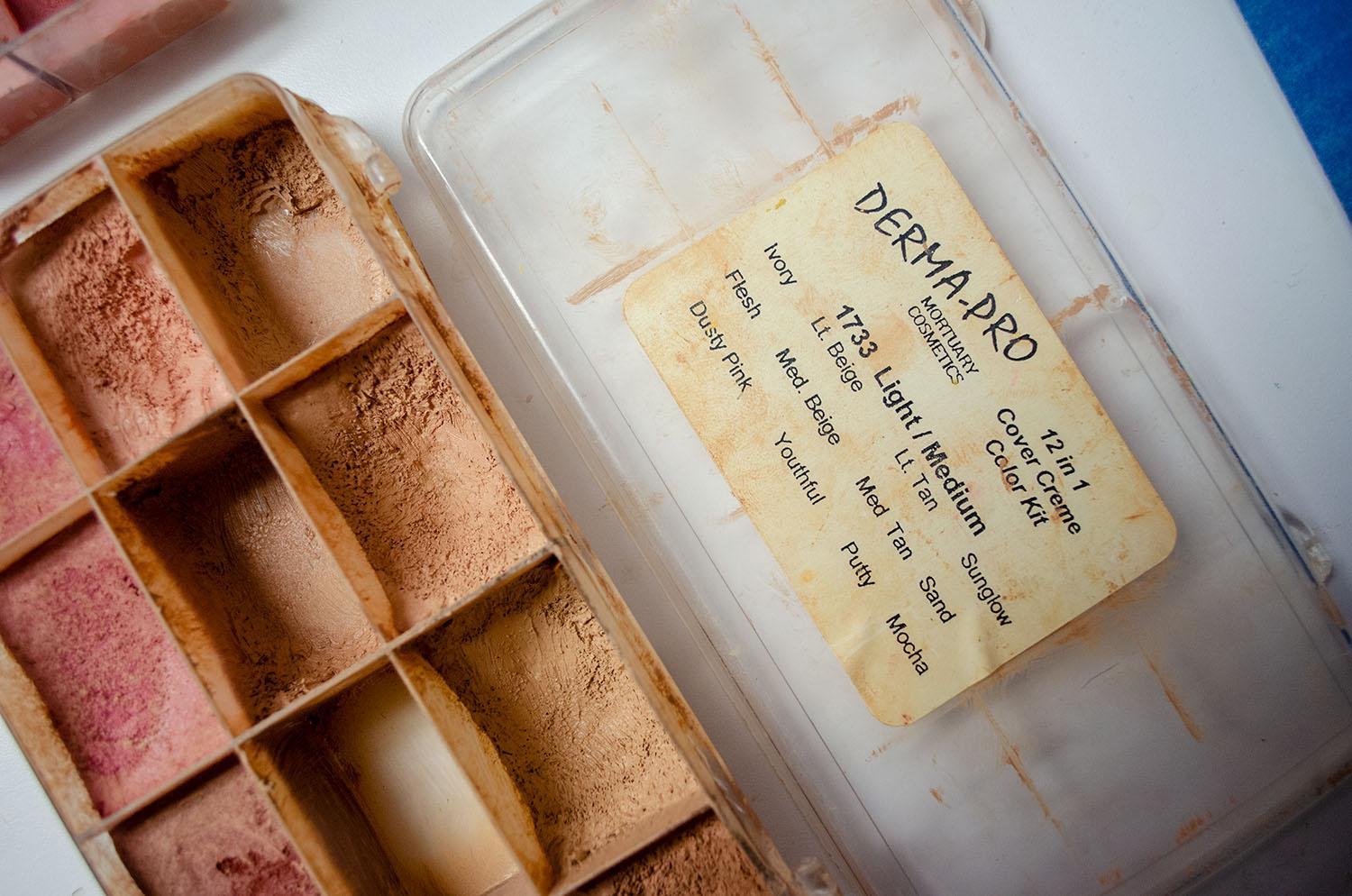
“Others say, ‘I’m just gonna put my loved one in a pine box and bury it out back,’” Folds said.
The process is gratifying, but Kirby still feels the pressure to do a good job. Just about the worst thing you can do for a family is paint their loved one in makeup they never wore. Having spent all his life at the J.C. Kirby & Son, he has seen it all.
“You buried all your friends’ grandparents, then you buried your friends’ parents,” he said. “At my age, you’re burying your buddies.”
Kirby has arranged a horse-drawn hearse for an older fellow who watched with tears in his eyes as his wife was transported to her gravesite. According to the older fellow, Kirby handled her death with grace and class.
Kirby has started a funeral service five minutes late, looked at the casket and said, “I’m sorry we’re late today, but she wasn’t ever on time anywhere.”
He’ll do what it takes to make the family feel peace, but believes the only way to truly understand the life of the deceased is to have someone get up there and tell it — open discussion of death is necessary.
“The moment you’re born, you start to die,” he said. “But people don’t like talking about death.”
As county coroner for the last 40 years, Kirby has seen countless homicides, suicides, drug overdoses, accidents, close to 1,000 cases a year. His job is to put motions in place that prevent those accidents from happening.
“I’ve gone up and down the road and picked pieces of people up, those hit by trains,” he said. “Pieces here, pieces there. There’s no dignity in dyin’ sometimes. It’s important to try and put them back together.”
Respecting life and respecting people’s decisions on how they want their death and service to be handled is what embalming is all about. Kirby’s the kind of man who thinks you have a problem if your house is nicer than your business and adapts his business with the changing times.
“How many times you seen that man in suit?” Kirby asked a family who felt uncomfortable when they saw their loved one dressed unlike ever before. The family drove home, grabbed a pair of the deceased’s old coveralls and made the switch before the service. Kirby said it’s all part of the motions of grief.
Folds refers to the embalming and funeral process as “laying them away in their bed, because it’s their treasure box that’ll be with them forever.”
From the moment death occurs, the procedure that follows is quick and specific but not without compassion toward those who have to part with their loved ones all too soon. Tending to the deceased may just be another job, but it assists society in moving on as life progresses.
“It’s like a ball rolling down a hill — ain’t no breaks,” Kirby said. “You can’t stop death. It’s going to happen.”
